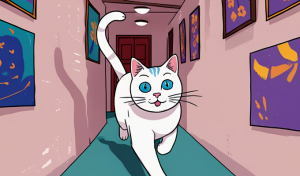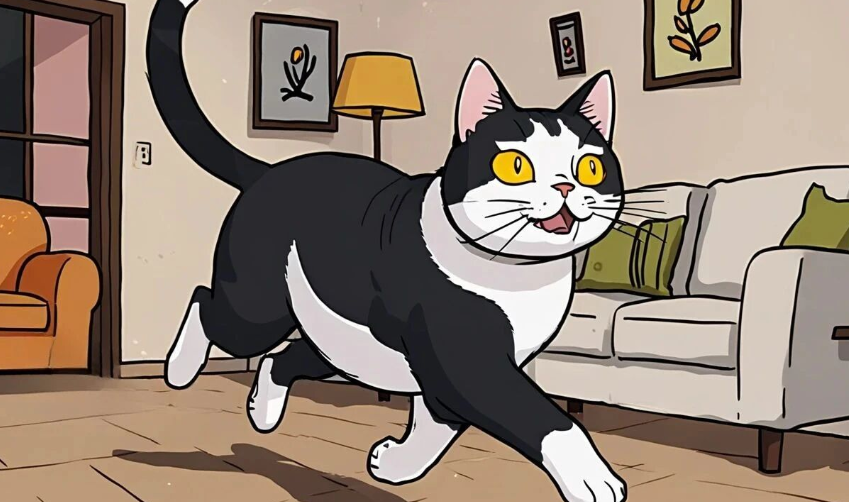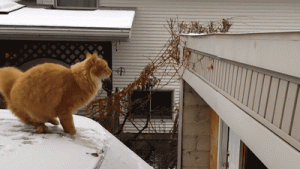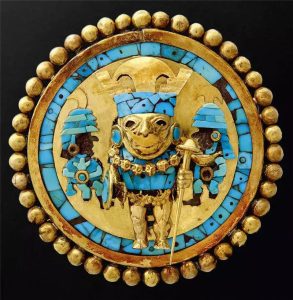One moment your kitten is sitting quietly, looking calm and well-behaved, and the next, it’s like someone installed a motor—suddenly zooming around the house like crazy. Does your cat ever do this too? Naturally, it makes us wonder: why do cats suddenly sprint around the house like this? Are they going crazy? In reality, a cat’s sudden bursts of running are not a sign of madness—they actually happen for a variety of practical reasons.
-
Instinct
he ancestors of domestic cats, the African wildcats, were fierce survivors in the wild, navigating grasslands and deserts with remarkable hunting skills. On the African plains and desert edges, wildcats had to constantly move to find food, hunting mice, birds, and other prey. This required strong predatory abilities. Even after thousands of years of domestication, domestic cats no longer need to hunt for survival, but their hunting genes remain embedded in their bodies.Research shows that a cat’s hunting behavior involves four stages: locating, stalking, chasing, and pouncing. When a house cat suddenly dashes around the home, it may be treating furniture or objects as imaginary prey, and the frenzy is part of the chase and pounce phase. Animal behaviorists have conducted experiments showing that when domestic cats watch videos of mice moving, over 80% display excitement, chasing, pouncing, and even searching around the room as if hunting. This clearly demonstrates that even house cats retain their hunting instincts.
-
Playful Frenzy
Cats spend a large portion of their day sleeping to conserve energy. Once awake, they release their energy fully. Studies indicate that an adult cat needs at least 20–30 minutes of active exercise daily to burn off energy. If they don’t get enough activity, the surplus energy may manifest as sudden, wild sprints around the house. Similar to humans feeling restless after sitting too long, cats also need movement to maintain physical health. Limited space or few toys at home can make these “crazy runs” even more frequent.

-
Stress Release
Cats have emotions and are extremely sensitive. Even small changes or minor disturbances in the home can stress them. When stress accumulates, cats may release it through behaviors like wild running or random scratching. Research observing cats’ behavior and hormone levels found that after environmental changes, cortisol (the stress hormone) levels rise significantly. Following a period of “crazy sprinting,” cortisol levels decrease, much like humans relieving stress by going for a run.
-
Heightened Senses
Sometimes a cat’s sudden sprint isn’t random—it may have truly detected something you haven’t noticed. Cats possess far more acute senses than humans, with highly developed hearing and smell. While the home seems quiet to you, a cat might already hear insects crawling in corners or smell an unfamiliar scent. Studies reveal that approximately 30% of a cat’s sudden bursts of running are triggered by subtle sounds or scents undetectable to humans.
Now you know—the reason your cat suddenly sprints wildly around the house isn’t because it’s gone crazy. There are real, specific reasons behind this behavior. So, has your kitten ever acted like this? What do you think motivates your cat to do it?





